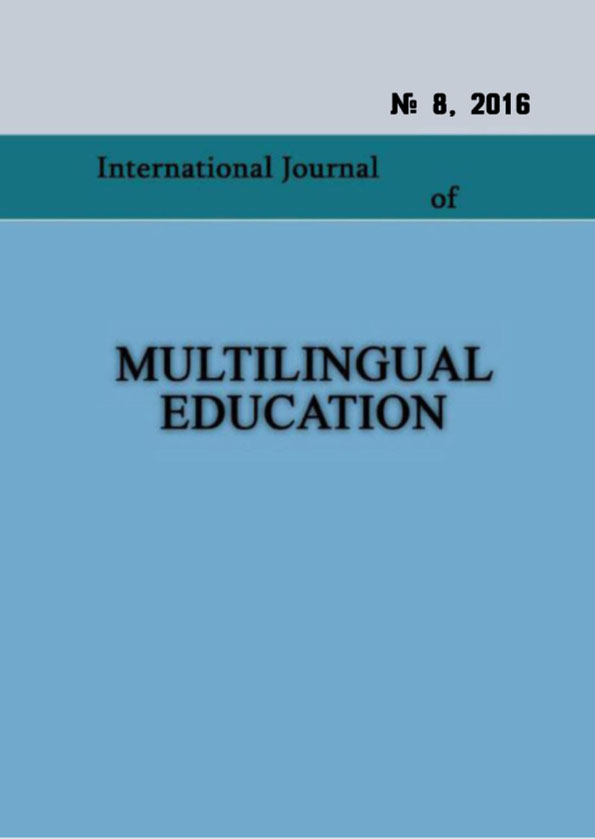Content and Language Integrated Learning: Lithuanian teachers’ viewpoints
Keywords:
CLIL, language teaching, subject teaching, teachers.Abstract
CLIL is an internationally-recognised approach to teaching a language and a subject simultaneously or in other words, teaching a non-language subject through the medium of a second or foreign language (L2). Having emerged from the evidenced-based, well-documented success of the Canadian immersion model for language teaching, in which mainstream curriculum content (e.g. Science) is delivered through the students’ non-native language (e.g. French) (Cross, Gearon, 2013), CLIL has been widely used in Europe for over twenty years now and it has been considered to be an innovative and a successful approach in the promotion of multilingualism in Europe (Ioannou-Georgiou and Pavlos Pavlou, 2011). CLIL has been lately acknowledged in Lithuania as well. The Ministry of Education and Science of the Republic of Lithuania issued the Guidelines project which aim at encouraging a wider implementation of CLIL in the system of general education.
In spite of great potential and benefits that CLL offers (i.e. improvement of learners’ language skills and subject knowledge alongside the development of their communicative skills and intercultural competence as well as promotion of diverse learning strategies, etc.), it raises some important issues for teachers implementing CLIL too. The essential questions about CLIL, as being pointed out by Ľudmila Hurajová and Jana Luprichová (2015), are who should be responsible for teaching content through the second language and how this should be done. Evidently to become a good content or language teacher one has to be an expert not only in the content area but also have a dee understanding of the cognitive, sociocultural and psychological elements of foreign language teaching and learning. In order to find out the Lithuanian teachers’ readiness and willingness to apply CLIL approach in their teaching process, the research was carried out with the aim focusing on Lithuanian teachers’ viewpoints of CLIL. The research sought to address the following four key questions: what CLIL is, why it is important to learn the subject and a foreign language together, what difficulties could a learner encounter while learning a subject and a foreign language together and finally, what difficulties could a teacher encounter while teaching a subject and a foreign language together. There were 36 different subject teachers from various schools of general education of Lithuania who participated in the research. The article provides the results of the qualitative research data analysis and the insights revealing the Lithuanian teachers’ viewpoints of CLIL in the Lithuanian educational context.
References
Būdvytytė-Gudienė, A.,Toleikienė, R., Alminienė, R., Bikulčienė, R. (2010). Praktinės CLIL taikymo galimybės. Šiauliai: VšĮ Šiaulių universiteto leidykla, ISBN 978-609-430- 054-7.
Cheng Liu, Xiaofang Wang (2013). Study on the Application of CLIL in English Teaching of Acupuncture and Moxibustion. International Conference on Advanced Information Engineering and Education Science (ICAIEES 2013).
Chmelíková, G. (2015). Preparing the Postgraduate Students for Academic Environment by Specific Training and by Utilizing Technologies. Proceedings ICETA 13th International Conference of Emerging eLearning Technologies and Applications.
Coyle, D., Hood, P. & Marsh, D. (2010). Content and Language Integrated Learning. Cambridge: CUP.
Coyle, D. 2010, p. 41 http://blocs.xtec.cat/clilpractiques1/files/2008/11/slrcoyle.pdf
Cross R., Gearon M. (2013).Integrated Learning (CLIL). Approach to Teaching and. Learning Languages in. Victorian Schools. ISSN 1324-9320. Didactic Innovations at Siauliai University. (2012). Sud.: Liukinevičienė L. Šiauliai: VšĮ Šiaulių universiteto leidykla. ISBN 9786094301513.
Eurydice (2012).
Hurajová L., Luprichová J. (2015). Contentand Language – how to integrate them on tertiary level. Open Online Journalfor Research and Education Special Issue #4, December 2015, ISSN: 2313-•‐1640.
Infante, D., Benvenuto, G., Lastrucci E., (2009) The Effects of CLIL from the Perspective of Experienced Teachers. In. Marsh, D. and Mehisto; P. Wolff, D., Aliaga, R., Asikainen, T., Frigols-Martin, M. J., Hughes, S., Langé, G., (eds.) CLIL Practice: Perspectives fromtheField. http://www.icpj.eu/?id=title
Ioannou-Georgiou S., Pavlou P.. (2011). Guidelines for CLIL Implementation in Primary and Pre-Primary Education. ISBN 978-9963-9058-1-2
Johnstone, R and McKinstry, R (2008) Evaluation of Early Primary Partial Immersion document.
Kukla, A. (2000). Social Constructivism and the Philosophy of Science. New York: Routledge.
Mathole Y. (2016). Using Content and Languge Integrating Learning (CLIL) to address multilingualism in South African schools. In: European Journal of Language Policy, p. 57-79.
Murray R., Caulier-Grice J., Mulgan G. (2010). The Open Book of Social Innovation. Nesta Innovating Public Services.
Nguyen, T. (2016). Reconsidering the first steps of CLIL in Vietnam. In: European Journal of Language Policy, p. 29-56.
Vilkancienė L. (2011). CLIL in Tertiary Education: Does it Have Anything to Offer? Studies about languages. Print ISSN: 1648-2824. Online ISSN: 2029-7203
Published
How to Cite
Issue
Section
License
Copyright (c) 2016 Vilija Targamadzė, Roma Kriaučiūnienė

This work is licensed under a Creative Commons Attribution-NonCommercial 4.0 International License.
Copyright (c) - Authors who publish with this journal agree to the following terms: Authors retain copyright and grant the journal the right of first publication with the work simultaneously licensed under a Creative Commons Attribution-Noncommercial 4.0 International License, which allows others to share the work with an acknowledgement of the work's authorship and initial publication in this journal. Authors are permitted and encouraged to post their work online (e.g., in institutional repositories or on their personal website) prior to and during the submission process, as it can lead to productive exchanges, as well as earlier and greater citation of published work (see The Effect of Open Access). Authors may enter into separate, additional contractual arrangements for the non-exclusive distribution of the journal's published version of the work (e.g., post it to a repository or publish it in a book), with an acknowledgement of its initial publication in this journal.

